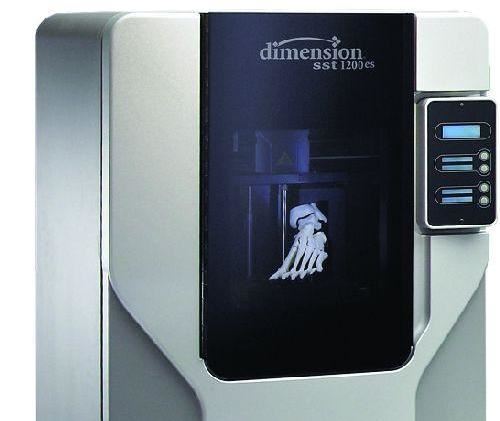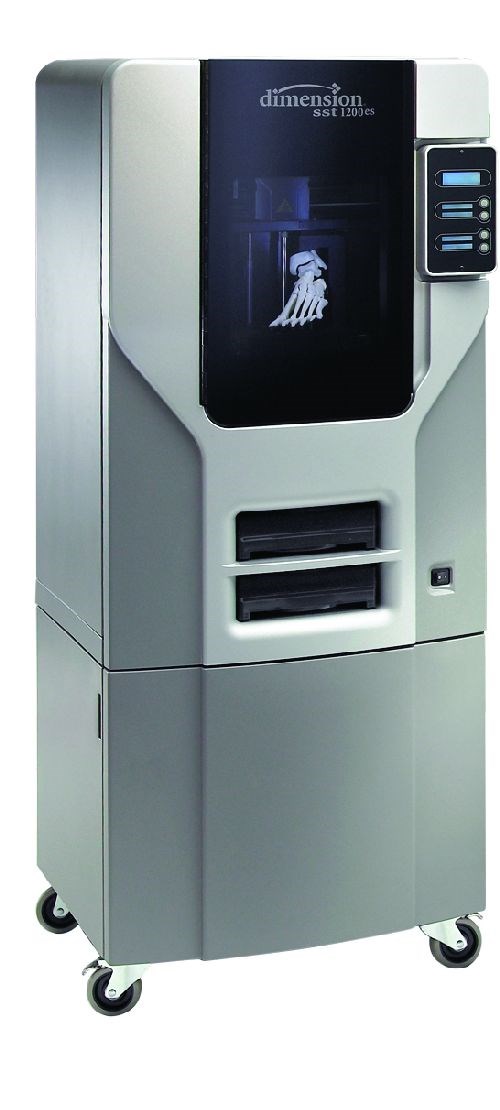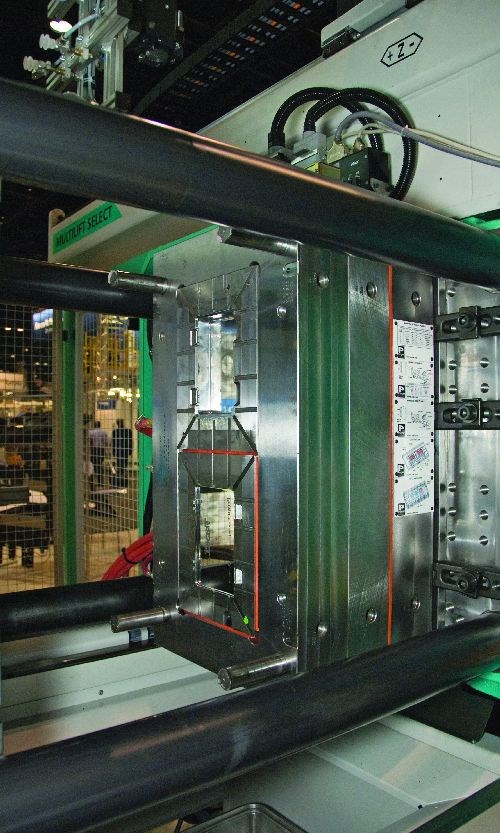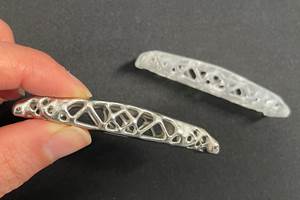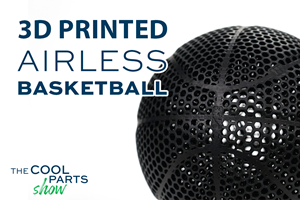Mold manufacturers must view themselves as partners to their customers in order to achieve optimum early supplier involvement and gain a competitive edge. This means working with customers during product design to ensure optimal manufacturability, quality, cost and tooling leadtime.
This partnering strategy streamlines the design process, demonstrating its efficiency over the conventional approach where a job is put out for bid after the design is finalized, only for the manufacturer to discover costly manufacturability issues during mold-build operations.Communication is the essential component here, and there are a variety of technologies that can be used to help improve that communication between a mold manufacturer and its customer. One gaining popularity with mold manufacturers is 3D printing, and Proper Group International of Warren, Michigan, is one moldmaker that has successfully put this technology to work.
Proper Group has established a niche in the automotive industry, particularly in lighting molds, interior textile molds, chromed and highly visible products, multi-material molds, glass-encapsulation molds and stack molds. The work involves an engineering and technical center, mold maintenance and repair, rapid prototyping solutions and R&D. Today, the company occupies more than 150,000 square feet of manufacturing space.
Within the company’s tooling division is a design lab that is essentially a think tank staffed with engineers—equipped with the latest CAD/CAM/CAE software—who design, develop and implement innovative solutions for their customers. This is where 3D printing comes into play.
Printing Properly
3D printers can be an essential extension of a shop’s overall CAD system and a critical part of the entire design process. Developed for workstation and network access much like a standard laser printer, 3D printing offers a fast, low-cost alternative for building concept and working models, according to Joe Hiemenz, technical communications manager for 3D printing equipment maker Stratasys.
3D printing is the process of creating objects from a digital file using a materials printer. It is a particularly fast form of prototyping involving a low-cost, easy-to-use machine. An added benefit is the machine’s ability to locate very close to designers and engineers, who can then complete jobs efficiently and quickly.
According to Proper Group vice president of sales and marketing Joe Grippe, as the company looked to expand its services to current customers, it found that 3D printing would help the company move upstream to be engaged with customers earlier in their programs.
Proper owns a Dimension 3D printer from Stratasys. The machine was purchased for its design lab and is used primarily for front-end feasibility by the company’s engineers when they are working with customers early on to review data.
“CAD is great for visualization, but what we’ll use when meeting with customers is a 3D print-out of the data, so they can clearly see what the issues are,” Grippe says. “This greatly improves communication and collaboration and typically results in reduced time-to-market and production costs.”
The Dimension printer uses fused deposition modeling (FDM), an additive manufacturing process patented by Stratasys that builds plastic parts layer by layer using data from CAD files. “During the FDM process, a plastic filament is fed into an extrusion head and heated to a semi-liquid state,” Hiemenz explains. “Following a toolpath defined by the CAD file, the head deposits the material accurately in layers as fine as 0.005-inch thick. The model is built from the bottom up—one layer at a time.”
This process can create concept models, functional prototypes or production parts from engineering thermoplastics, such as ABS, polycarbonate, polyphenylsulfone, blends, medical versions of these plastics and ULTEM.
“Plastic parts built via FDM are tough enough to be sanded, painted, drilled, assembled and tested, and then can be installed in product for sale,” Hiemenz says. “FDM additive manufacturing systems can also be used to create tooling patterns and masters for silicone molds. The FDM process is commonly used to create manufacturing tools, such as jigs and fixtures, as well as production parts.”
According to Proper engineering manager Jim Lake, the biggest limitation is the size of the parts one can create. Proper specializes in medium- to large-size complex mold manufacturing. In most cases, the parts that Proper builds molds for exceed the size limit of the Dimension unit. Therefore, Proper makes half- or quarter-scale 3D prints.
Printing Perks
The Dimension 3D printer is easy to install and use in an office environment, Proper says. Most parts built in the 3D printer are begun in the evening and completed the next day. This enables designers and engineers to produce a part—for example, head-lamp/tail-lamp components or HVAC or console parts—that may have poor tooling conditions that need to be addressed in the design. Having a physical part in-hand when explaining the corrective options to the customers is very useful.
“The ability to quickly refine form, fit and function can significantly affect production costs via reduced engineering changes and time-to-market,” Hiemenz says. “This can create a distinct competitive advantage for those mold manufacturers who include 3D printing as an integral part of their design process.”
Grippe elaborates, “The product geometry that we deal with has become increasingly complicated. Conveying ideas or concepts through drawings or 3D CAD is sometimes not good enough. Providing a quick digital mockup, where you can physically display the design intent, can be critical to getting the design correct and obtaining buy-in from the various stakeholders. In the end, a digital mockup can reduce the design iterations, reducing the time to complete the design.”
Printing Possibilities
“3D printing has enabled us to communicate more clearly with our customers who may not be CAD literate or have access to CAD data,” Grippe says. “To be able to hold the physical part as opposed to looking at it virtually helps them better understand what the conditions and issues are that we are discussing.” Athough Proper doesn’t market its 3D printing capability directly, the company sees this capability as a value-added service it increasingly needs to have in order to compete.
SIDEBAR: The Outsource/In-House Debate
Whether to own 3D printing technology yourself or outsource the service is a decision to be made based on a solid business case. According to Joe Hiemenz of Stratasys, while there are many variables when comparing service provider costs with internal 3D printing costs, a company sending one relatively simple part per week to an outside service provider could, by comparison, pay for a 3D printer in a matter of months, and maintain control and confidentiality internally.
Proper Group looked at part complexity, size, customer knowledge and tooling complexity when deciding whether to bring 3D printing in-house. “We realized that it would be better to have the capability in-house to speed the service and ultimately reduce the cost,” says Proper’s Joe Grippe. The company saw that investing in a 3D printer for the design lab would add speed and flexibility when making critical design decisions.
To those moldmakers considering 3D printing, Grippe says part complexity influences whether 3D printing makes sense. “If you are a moldmaker who is not dealing with complex parts with complex geometries, then it may not be of value to you,” he says. However, “if you’re dealing with complex parts, data and molding conditions, then having the physical part is very valuable in terms of being able to communicate with your customer.”


